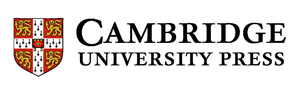Symposium S6
26 – 27 June 2017
Physics and Demography of AGN and Starburst Winds
Aims and scope
 Observations performed across the electromagnetic spectrum from radio to X-rays in the last decade have established the widespread presence of powerful winds involving all gas phases and all spatial scales, from the parsec sizes to thousands of parsecs. The detailed study of these winds is one of the most growing and dynamic areas of present-day astronomy and is ubiquitously present in the core science programs of recently-delivered and future astronomical facilities. How galaxy-scale winds originate and how much energy they carry and deposit into the ISM is a major issue for current research in extragalactic astrophysics.
Observations performed across the electromagnetic spectrum from radio to X-rays in the last decade have established the widespread presence of powerful winds involving all gas phases and all spatial scales, from the parsec sizes to thousands of parsecs. The detailed study of these winds is one of the most growing and dynamic areas of present-day astronomy and is ubiquitously present in the core science programs of recently-delivered and future astronomical facilities. How galaxy-scale winds originate and how much energy they carry and deposit into the ISM is a major issue for current research in extragalactic astrophysics.
A combined theoretical and observational effort has been recently devoted to understand the acceleration mechanism(s), physical properties and fate of AGN and starburst winds, given their important implications for the evolution of galaxies.
The timing of this Symposium is especially propitious to address the following key questions:
- How many wind flavors are there?
- How do galaxy-wide winds accelerate and expand?
- How kinetic power and mass-loading factor for the wind can be accurately derived?
- What is the fate of AGN outflows and superwinds?
- What is the role of AGN outflows and superwinds in the evolution of the host galaxy ISM, and in the stimulation or suppression of star formation?
This meeting aims to bring together theorists and observers (involving both young and senior scientists) in order to discuss the most recent results in the field, develop ideas for new observations and new facilities and stimulate contacts.
Programme
- Section 1: Nuclear winds, BALs and UFOs
- Section 2: Observations and statistics of AGN-driven kpc-scale winds and galactic superwinds
- Section 3: Theory of Galactic Superwinds and AGN-driven outflows
- Section 4: Different winds and their different impact on galaxy evolution
- Section 5: Looking ahead: new data, new facilities and new challenges
Invited speakers
- M. Cappi (INAF-IASF Bologna; Italy)
- F. Combes (Observatoire de Paris; France)
- N. Forster Schreiber (MPE; Germany)
- K. Zubovas (Center for Physical Sciences and Technology; Lithuania)
- F. Fiore (INAF-OAR; Italy)
- S. Veilleux (University of Maryland; USA)
- T. Misawa (Shinshu University; Japan)
- D. Angles-Alcazar (Northwestern University; USA)
- C. M. Harrison (ESO)
- R. Maiolino (University of Cambridge; UK)
Scientific organisers
- A. Bongiorno (INAF-Osservatorio Astronomico di Roma; Italy)
- C. Feruglio (INAF-Osservatorio Astronomico di Trieste; Italy)
- S. Garcia-Burillo (Observatorio de Madrid, OAN-IGN; Spain)
- A. King (Univ. Leicester; UK)
- V. Mainieri (ESO)
- A. Marconi (Univ. Firenze; Italy)
- E. Piconcelli (INAF-Osservatorio Astronomico di Roma; Italy) [Chair]
- T. Storchi-Bergmann (Instituto de Fisica-UFRGS; Brazil)
Contact
Enrico Piconcelli: enrico.piconcelli @ oa-roma.inaf.it
Updated on Thu Jan 19 09:58:46 CET 2017
|

 A power cut will shut down all EAS services on Tuesday, 10 January 2017 starting at 7:30 CET.
A power cut will shut down all EAS services on Tuesday, 10 January 2017 starting at 7:30 CET.




















